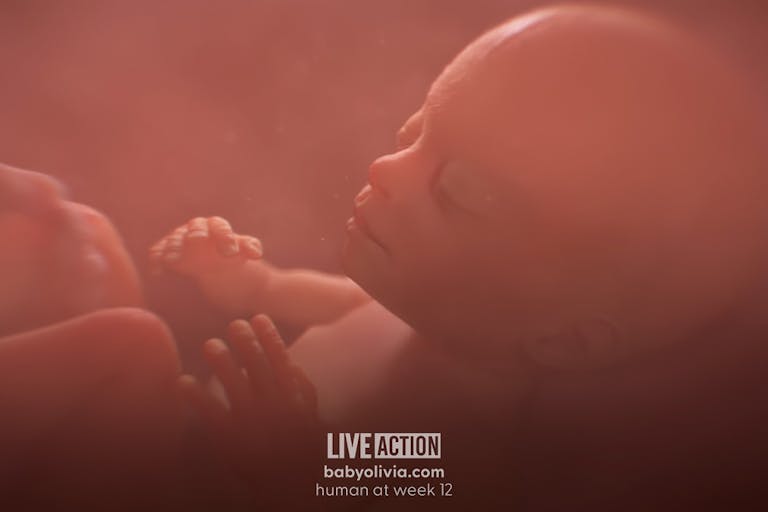
Prosecutors drop charges against Polish doctor who aborted baby in ninth month
Nancy Flanders
·
Regulation of abortion at the state level denies preborn humans equal protection
Sen. Lindsey Graham (R-S.C.) revealed yet another divide in the Republican Party this week after he proposed a federal law to protect preborn children from abortion after 15 weeks of pregnancy, which is the same timeframe the Supreme Court upheld when it overturned Roe v. Wade in June.
So far, Graham has encountered opposition from Republicans like Sen. Shelley Moore Capito (R-W.Va.) and Senate Majority Leader Mitch McConnell (R-Ky.) who argued the issue should be left for states to decide. This is what the majority argued in Dobbs and what Justice Kavanaugh said in his concurring opinion.
Abortion is not a state-level issue
Part of Roe’s legacy, conservatives have argued, was that it further embittered politics by removing a contentious policy issue from the democratic process. But what if the people did decide abortion policy but through their representatives in the federal, rather than state, government?
If there’s one thing staunch advocates on both sides can converge on, it’s that abortion should not be a state-level issue. Babies don’t become less human because they cross the border between Oklahoma and Kansas, which recently rejected a measure to protect preborn children. Likewise, women don’t become less pregnant — or lose their autonomy, according to pro-abortion activists — when crossing in the other direction.

READ: There is no ‘right’ to abortion in the U.S. Constitution
This is becoming more likely and, as the justices indicated, is the type of flexibility Americans may enjoy in a federal system. Earlier this month, Planned Parenthood claimed that it saw a 550% spike in visits in states neighboring Texas after it enacted its heartbeat act.
It’s unclear how accurate that data is and pro-lifers would of course disagree with abortion proponents’ notion that it shows the procedure should be more readily accessible. Regardless, figures like those expose the inadequacy of state-level legislation on an issue so fundamental as abortion. The procedure has arguably altered families and the workplace, and has had a lasting impact on women – both those who regret their abortions and those who celebrate them.
This is not something like education or transportation, which have traditionally been reserved for states as they are more likely to make better-tailored solutions for their residents. A one-size-fits-all approach isn’t always practical because states vary in demography, economic activity, and political opinions among other things. But when it comes to the location-independent realities of pregnancy and fetal life, basic human justice demands that political or demographic variations shouldn’t dictate outcomes.
This appears to be what the framers of the 14th Amendment had in mind when they said: “No State shall make or enforce any law which shall abridge the privileges or immunities of citizens of the United States; nor shall any State deprive any person of life, liberty, or property, without due process of law; nor deny to any person within its jurisdiction the equal protection of the laws.”
The concept was similar after the Civil War in that they didn’t believe African Americans should lose certain protections just because they crossed state lines. During its passage, states had numerous laws restricting abortion, and state abortion laws weren’t even struck down for another century. And since its passage, the case for preborn humanity has only grown with scientific advancements in both understanding the reality of life and in developing methods for saving it.
But somehow, American jurisprudence has twisted that amendment’s meaning to protect the purported right to end a life rather than ensure its protection under the law.
Federal action
The Supreme Court has repeatedly employed language that either affirms or indicates the reality of life in the womb. For example, the Court recognized in Webster v. Reproductive Health Services that the state had a legitimate interest in protecting fetal life. Casey, which refined Roe, used the term “potential life” while marking viability as a starting point for state protection. Citing Casey, Gonzalez v. Carhart similarly held that the state has an interest in protecting “the life of the fetus that may become a child.”
This is why the Supreme Court arguably should have ruled that states must act to prevent abortion as part of their Constitutional responsibility to ensure equal protection under the law. But they didn’t and now we are all apparently supposed to act as though lives lose objective value as they move from state to state. Similar confusion stems from laws that punish murderers of pregnant women as if the assailant took two lives.
This incoherence alone should be reason enough for Congress to determine that preborn children are persons under the law. There’s a case to be made that Congress should interpret the 14th Amendment as protecting fetal personhood and pass legislation, as the amendment allows, to force state protection. The decision to abort is permanent, as once the right to life is denied, it cannot be undone and there is no recourse.
Article continues below
Dear Reader,
In 2026, Live Action is heading straight where the battle is fiercest: college campuses.
We have a bold initiative to establish 100 Live Action campus chapters within the next year, and your partnership will make it a success!
Your support today will help train and equip young leaders, bring Live Action’s educational content into academic environments, host on-campus events and debates, and empower students to challenge the pro-abortion status quo with truth and compassion.
Invest in pro-life grassroots outreach and cultural formation with your DOUBLED year-end gift!
And if Kavanaugh’s concurring opinion is correct, Dobbs did not grant states the authority to prohibit interstate travel for the purposes of abortions. Nor did it allow them to prohibit abortions if the woman’s life is in danger.
Any given state arguably has a duty to prevent helpless children from traveling to another state where they will meet a grisly death. That child faces a uniquely dangerous threat of coercion in which she is unable to defend herself against threats that law enforcement should protect against – such as dismemberment and murder through crushing her skull.

The 15-week limit on abortion that McConnell is proposing would align with historical polling that generally favors at least some prohibitions on the procedure. Even if polling had been different, though, the preborn and marginalized groups’ dignity shouldn’t depend on popular opinion.
This is the same sentiment expressed by the 14th Amendment regarding racial discrimination, which is why it makes historical sense for Congress to leverage that particular provision to recognize the humanity of preborn children. The federal government should also explore whether it’s necessary to include children as a protected class in federal civil rights laws.
Other options seem less likely to succeed. For example, Congress could pass a pro-life Constitutional amendment but that would require a two-thirds vote in both chambers of Congress.
Another possibility is that Congress could interpret its authority over interstate commerce as applying to abortion. Their authority in this area is arguably more urgent than ever as corporations offer to pay interstate transportation costs and abortion pills make terminating life as easy as a phone call.
Utilizing that Constitutional authority would follow wording in previous legislation and court decisions on the issue. For example, the Partial Birth Abortion Ban Act (PBABA) of 2003 reads: “Any physician who, in or affecting interstate or foreign commerce, knowingly performs a partial-birth abortion and thereby kills a human fetus shall be fined under this title or imprisoned not more than 2 years, or both.” The Supreme Court upheld that law in 2007, although not on grounds that it fell under Congress’ interstate commerce authority.
According to the Congressional Research Service, Congress’ interstate commerce authority includes – under certain circumstances – the ability to condition funding on state actions (e.g. stripping funding from states that don’t ban alcohol purchases by individuals under the age of 21).
The Fourth Circuit Court of Appeals has also defended a pro-abortion law by arguing that “facilities buy medical and office supplies that move in interstate commerce,” as well as that clinic blockades affected interstate commerce. That decision, which upheld the Freedom of Access to Clinic Entrances Act of 1994, also supported Congress’ reading, noting that, “Congress rationally concluded that violence, threats of force, and physical obstructions aimed at persons seeking or providing reproductive health services affect interstate commerce,” the court said.
While the ruling’s context indicates support just for pro-abortion measures, attorneys could combine the text with PBABA, scientific evidence, and other case law to corroborate Congress’ assertion of this authority to ban abortion. Yet and still, attorneys would likely justify commercial intervention at least somewhat on the basis that abortion takes an innocent life. In that case, the U.S. would still be left with the question of why the 14th Amendment protects “person[s]” but preborn lives are somehow excluded from that category.
Finally, there’s reason for the federal government – either through Congress or the Food and Drug Administration (FDA) – to ban medication abortions based on threats to women’s health. Unfortunately, available data have been inadequate for determining the true threat of the abortion pill, leaving the FDA with a weak justification for removing the in-person dispensing requirement. Basic medical knowledge indicates a need for this requirement but studies have also pointed to the possibility that the pill alone poses threats to women’s lives.
Each branch of the federal government can act in a variety of ways to prevent abortions. And they should. It’s both the moral and logical choice given what we know about science and what the federal government has already said about the preborn.
In that case, federal policymakers would essentially disregard the Supreme Court’s state-based framing of the issue and inflame an already-painful sore on the back of American political life. But if any issue is worth risking socio-political turmoil, it’s abortion.
Editor’s Note: This article has been changed since its original publication.
“Like” Live Action News on Facebook for more pro-life news and commentary!
Live Action News is pro-life news and commentary from a pro-life perspective.
Contact editor@liveaction.org for questions, corrections, or if you are seeking permission to reprint any Live Action News content.
Guest Articles: To submit a guest article to Live Action News, email editor@liveaction.org with an attached Word document of 800-1000 words. Please also attach any photos relevant to your submission if applicable. If your submission is accepted for publication, you will be notified within three weeks. Guest articles are not compensated (see our Open License Agreement). Thank you for your interest in Live Action News!

Nancy Flanders
·
Issues
Angeline Tan
·
Guest Column
Emily Berning
·
Opinion
Nancy Flanders
·
Opinion
Mark Wiltz
·
Opinion
Mark Wiltz
·
Human Interest
Sam Dorman
·
Activism
Sam Dorman
·
Activism
Sam Dorman
·
International
Sam Dorman
·
Activism
Sam Dorman
·